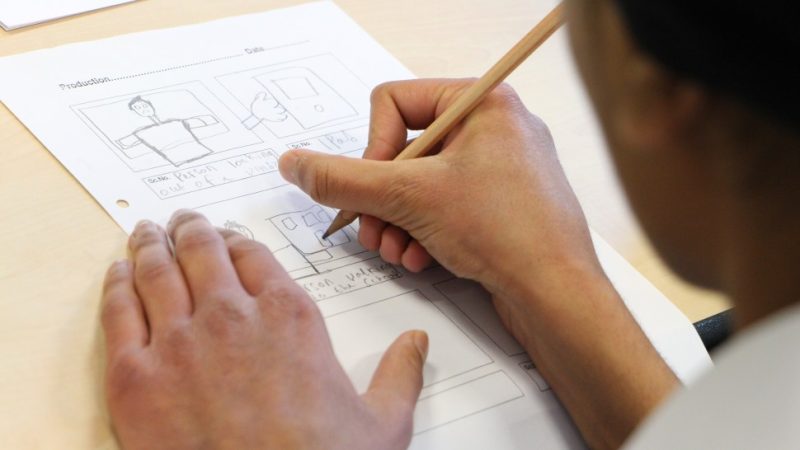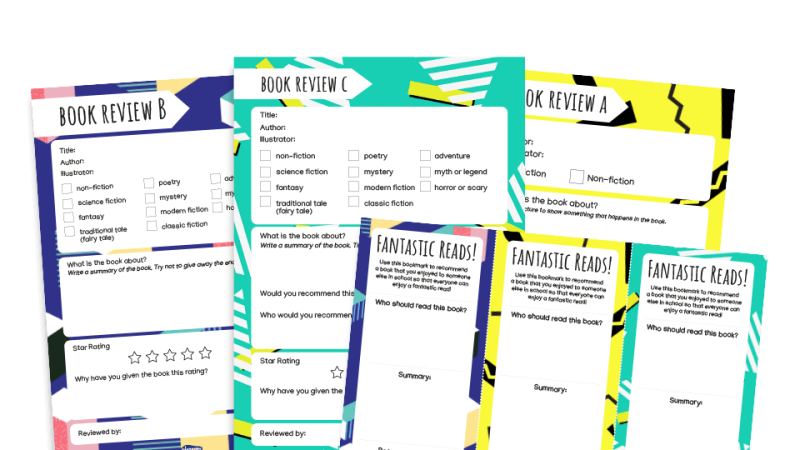Reading Isn’t Always About Questions And Tests. It’s About Escaping Into Another World

In these testing times, SATs revision needs to make way for something much more magical

- by Ian Eagleton

It’s Monday morning and a Y6 class are tackling last year’s reading paper. The children seem tired, sullen and uninterested. Answering these test questions will take up the whole lesson and they’ll then spend the afternoon ‘self-assessing’ their answers against a framework.
Sound familiar? Preparing children for the reading paper is vital, but too often involves demoralising, silent, timed exercises. Are there more effective ways of teaching reading that also develop children’s ability to cope in a test and, perhaps more importantly, their enjoyment of reading?
Tiers of joy
One of the starkest changes to last year’s reading paper was the emphasis on vocabulary. A large proportion of questions focused on testing children’s understanding of specific words and phrases. Robust vocabulary instruction is not just key to being successful in a SATs paper; it’s vital if children are to be able to grasp a text at a deeper level. Simply put, students must be able to understand what the words on the page actually mean, and link each word to the right context. This isn’t always as easy as it may appear though.
One strategy for teaching vocabulary is through the idea that words can be categorised into three tiers (Beck, McKeown and Kucan, 2002, 2013). To develop comprehension and help children describe concepts in detail, it is tier two words that we should focus on.
While tier one consists of basic words that need little explanation and tier three covers low-frequency words that are limited to specific domains, tier two words often have multiple meanings, are used across a variety of subjects and are characteristic of mature language users (examples include ‘benevolent’, ‘fortune’ and ‘sinister’).
One way of deciding the level of a word is to consider whether a student could explain it with vocabulary already known to them. If they can, the new word probably belongs in tier two, as it offers a more advanced and succinct way of describing something they already know.
A ‘vocabulary journal’ is a great teaching aid. Identify four to six tier two words from an appropriate text, then allow the children to read through the list with a partner. Encourage them to find each word in the passage and copy down the sentence it appears in. Next, ask the pairs to discuss what they think each word means, before using a dictionary to check the definition. Extend this further by using more than one dictionary to check for nuances of meaning. The students should now be able to decide which meaning makes the most sense in their example, then write their own sentence using the new language.
Graphic content
Try introducing young readers to ‘thinking maps’: visual displays of thoughts and ideas that help to demonstrate relationships between facts, concepts or ideas. Thinking maps can be used before, during or after reading and help to develop recall and retention of information. When preparing for tests, they are invaluable, as they require readers to share and explain their ideas. This encourages children to learn from others and see alternative answers, and allows them to practise articulating their opinions.

A ‘double bubble’ map allows children to compare and contrast. Try putting a character’s name in each of the central two bubbles, then note their similarities in the circles that link to both and their differences in the bubbles that only connect to one.

A thinking cloud is excellent for encouraging children to consider what a character might be thinking and feeling, helping them to develop their empathy and reflect upon character motivation.
Guiding light
While students must be taught how to tackle tests and answer different types of questions, it’s vital that guided reading sessions aren’t compromised in favour of whole-class test preparation sessions. They should be an enjoyable, relaxing part of the day where a small group of students can enjoy the rhythm, rhyme and musicality of language, without the pressure of having their ideas formally assessed. Use your sessions to give children access to high-quality texts (including picture books), rich and varied language, beautiful illustrations and engaging characters to develop their reading stamina and confidence. Frequent sessions help empower readers to share their opinions and develop their confidence. A regular guided reading schedule helps prevent tests becoming an all-defining experience.
Unsurprisingly perhaps, the most important ‘hook’ for getting children to engage with reading and helping them through the stresses and strains of SATs is their teacher.
Have a poem, topic, book or article that you feel passionate about? Put revision and test prep to one side and read it to them. Allow them to breathe, de-stress and enjoy the magic of listening to a book read aloud, before the next round of revision begins.
Children love feeling special and what could be more positive, encouraging and uplifting in the midst of a demanding new curriculum than hearing your teacher share their favourite story? Doing so lets students know that reading isn’t always about answering questions and taking tests. It’s about escaping into another world, finding out about others, learning who we are and, perhaps, thinking about who we’d like to be.
QUESTION EVERYTHING
Pose four different types of questions to young readers to help them access new layers of meaning, based on research by Raphael et al (1983, 1985).
Right there These are literal questions involving the same words that are found in the text, eg ‘How old is the prince?’
Think and search These require the reader to hunt for the answer. Some inference and deduction is needed, eg ‘How might the prince be feeling?’
Author and you Ask the reader to summarise a passage in their own words or predict what will happen next. This encourages them to relate information in the text to their own experiences.
On my own Students need to call on their knowledge and experiences in order to answer these opinion-based questions, eg ‘Do you agree that lying is worse than stealing?’
Supplying children these questions in advance helps them to focus and motivates them to explore the text at a deeper level. Give students an extract from a SATs paper and ask them to create their own quiz about it, prompting them with example questions from past papers. Avoid barraging children with questions that don’t connect to their knowledge of the world. This is ineffective and often leads to predetermined answers that only serve to stunt children’s thought processes.
Ian Eagleton has been teaching for ten years. He is an English consultant, working with JustImagine, and a Y4 teacher at Elmwood Primary School. Follow him on Twitter at @ieconsultancy











